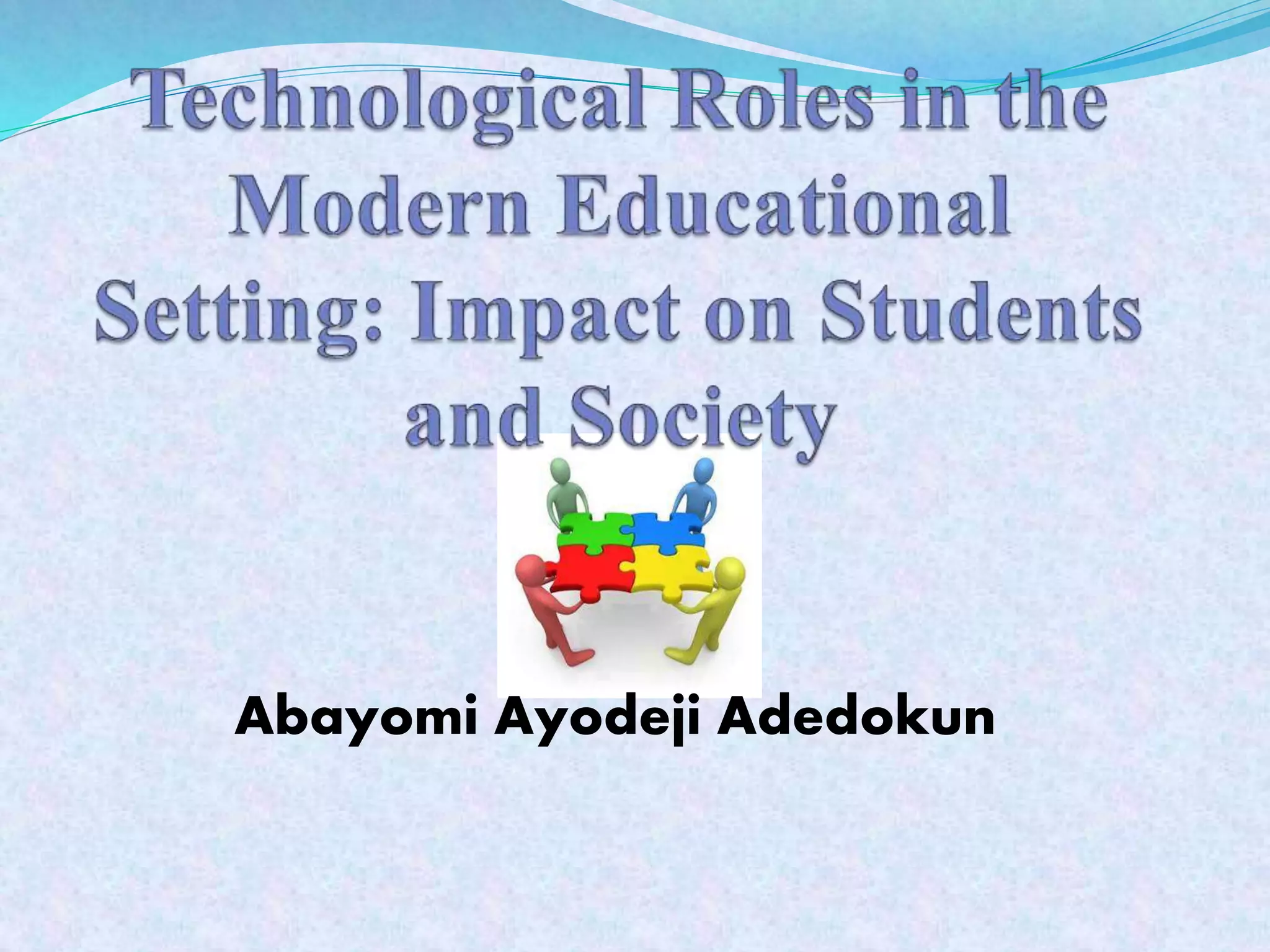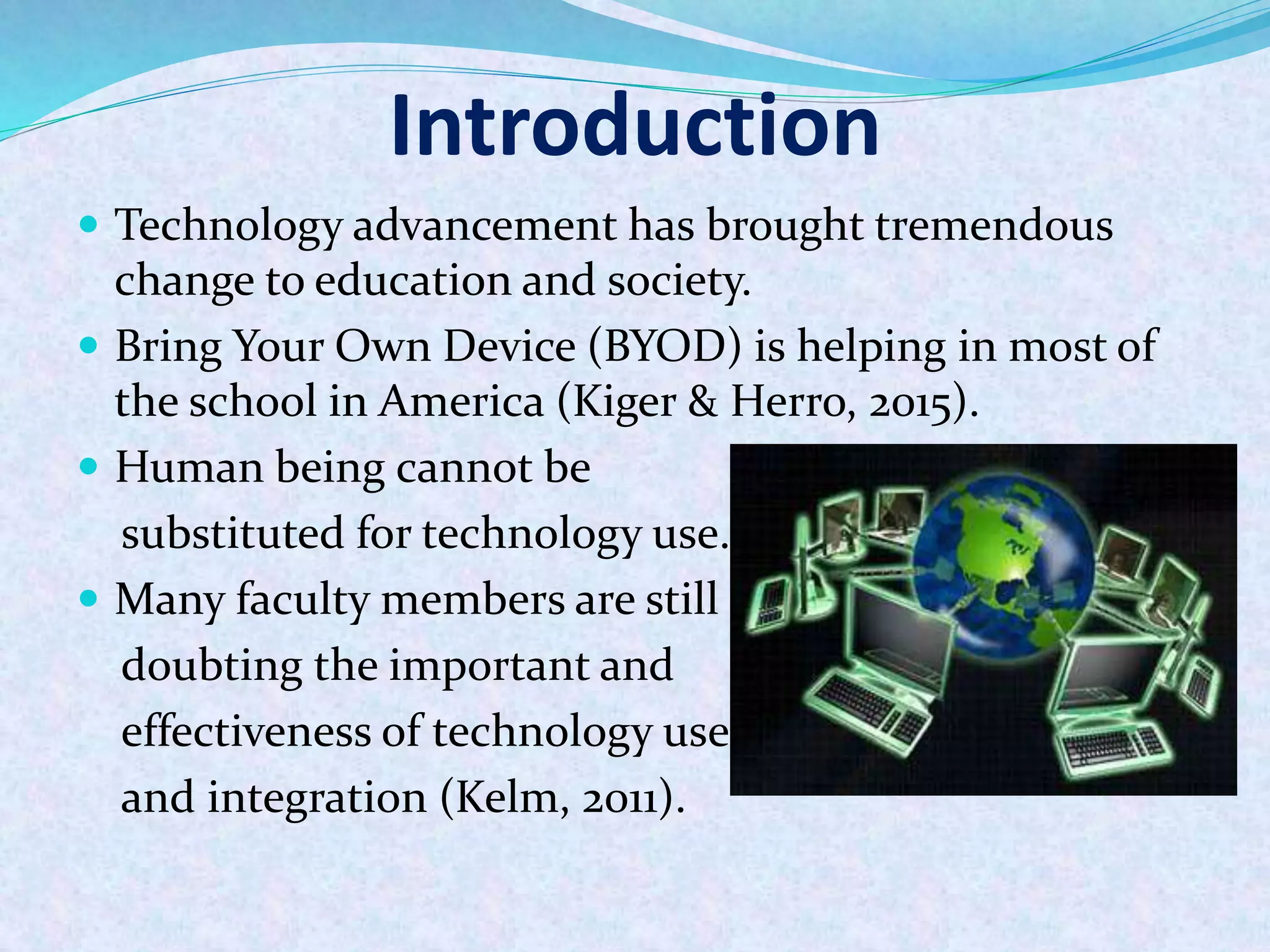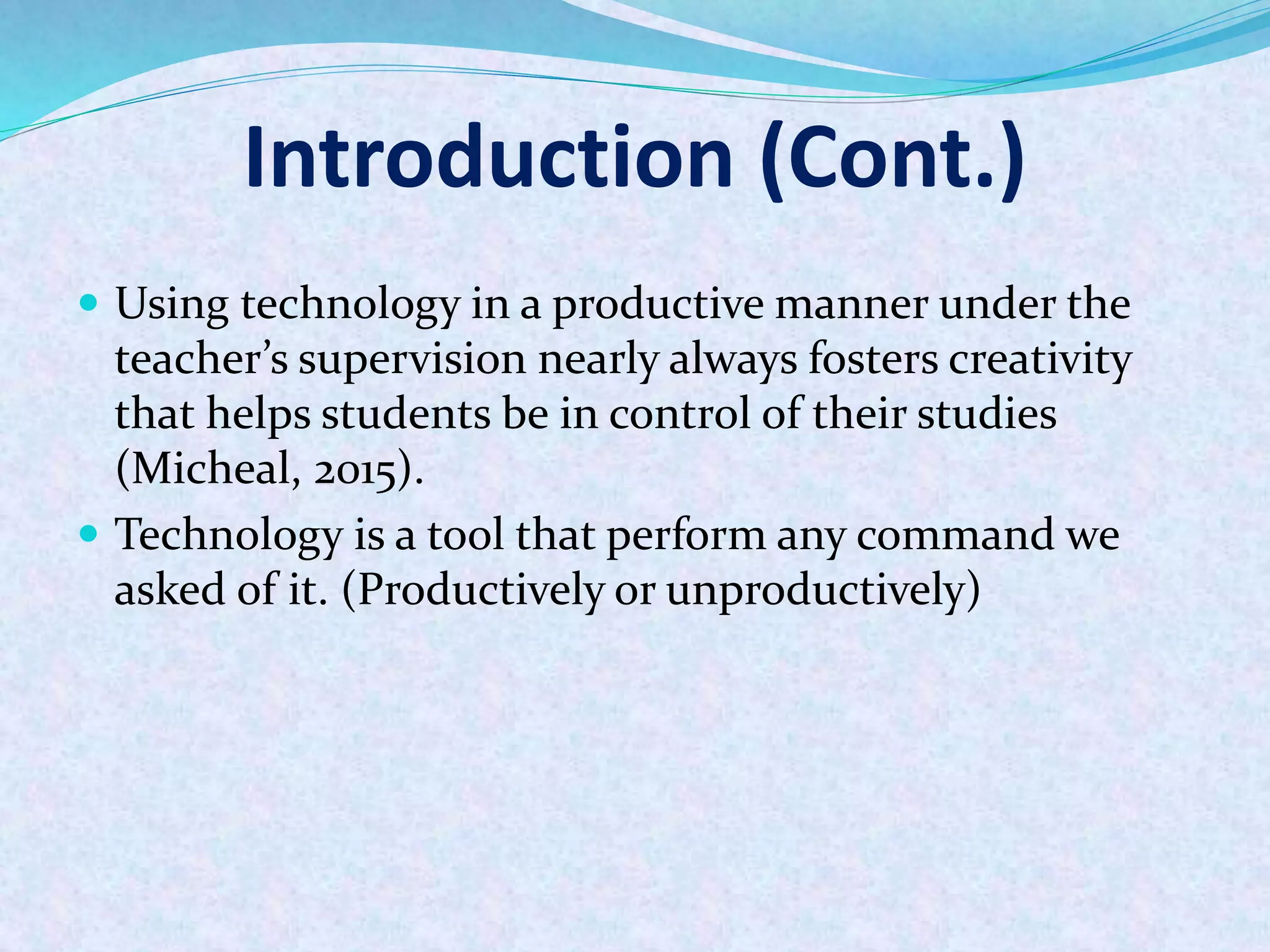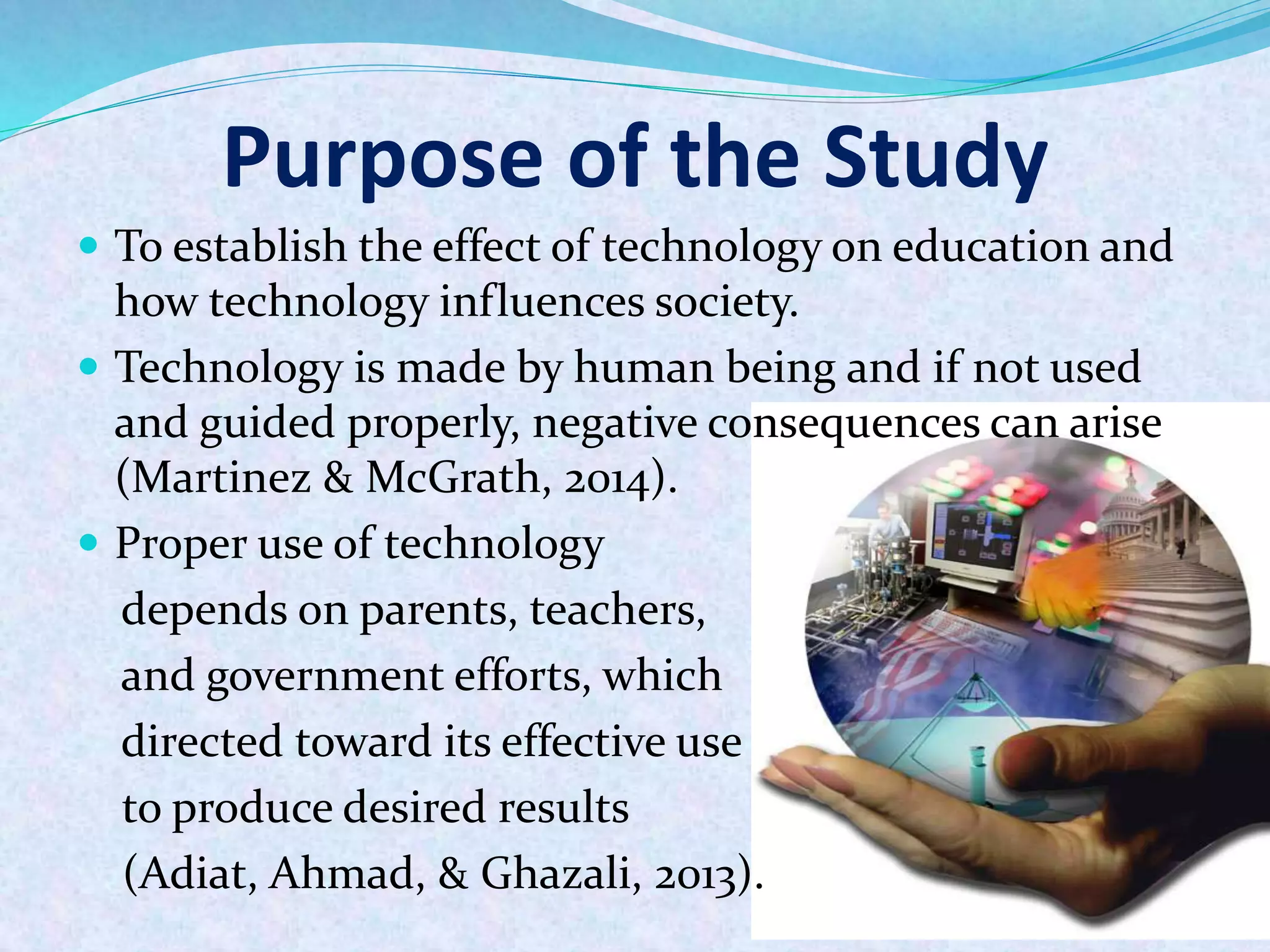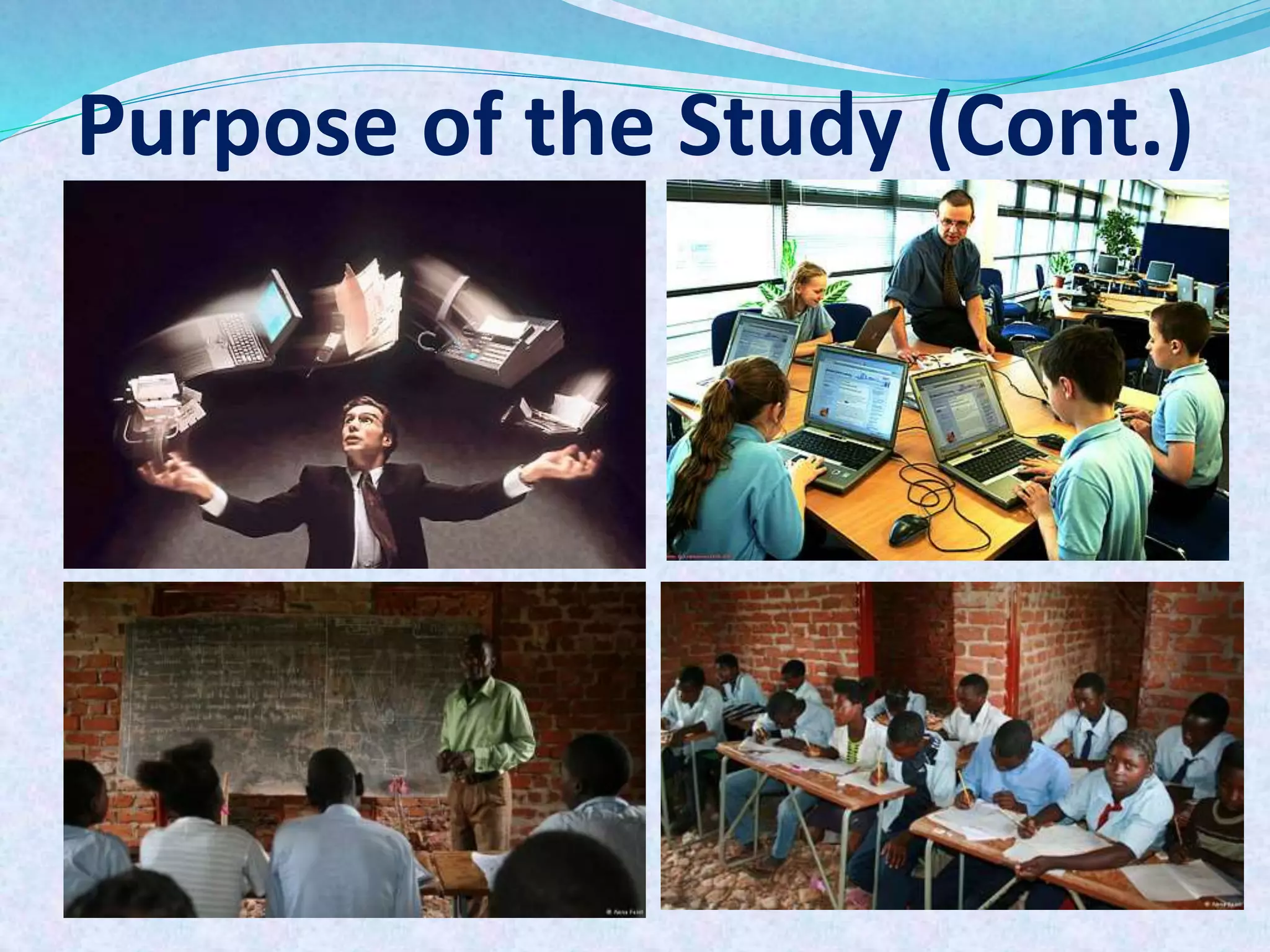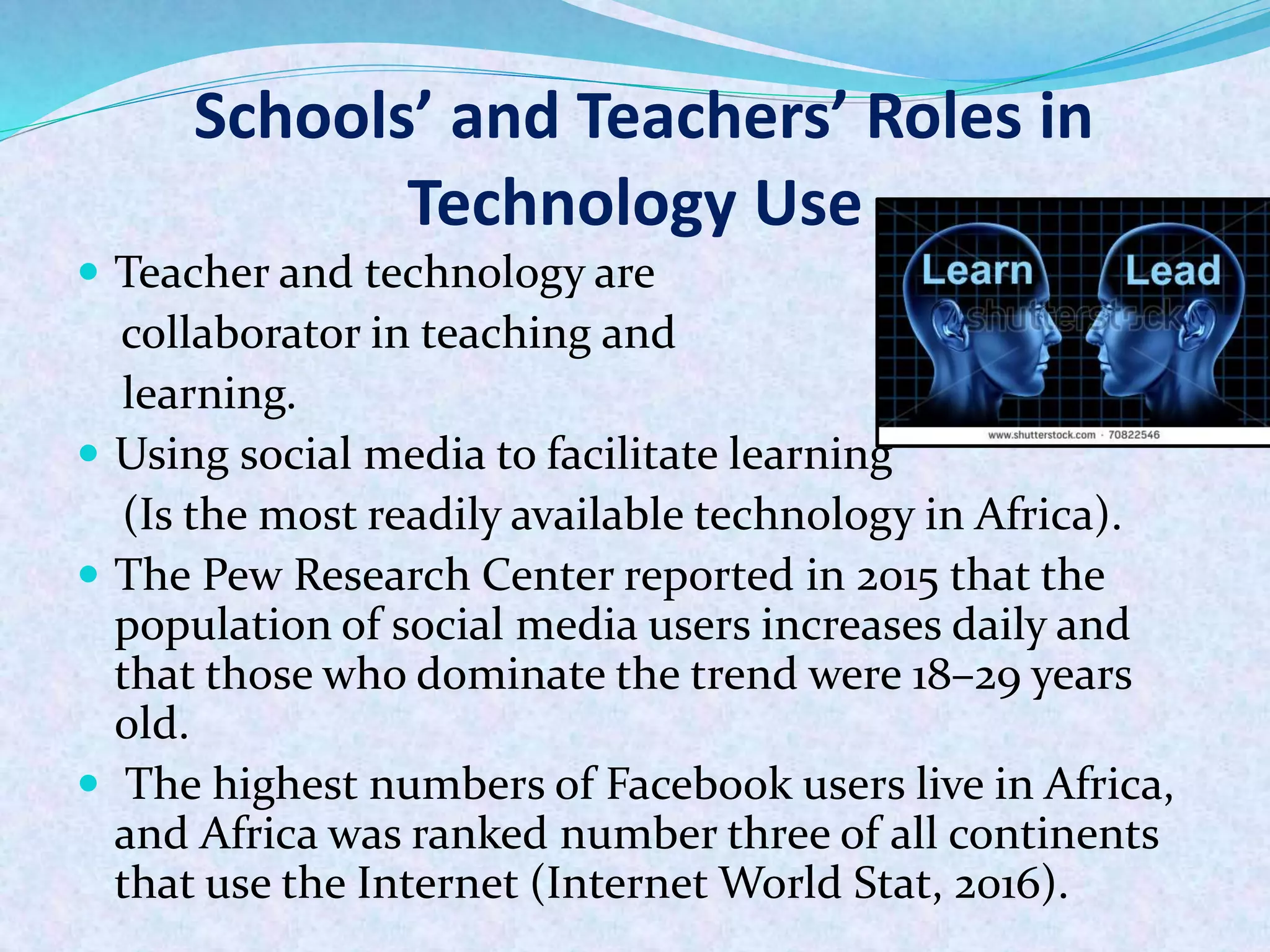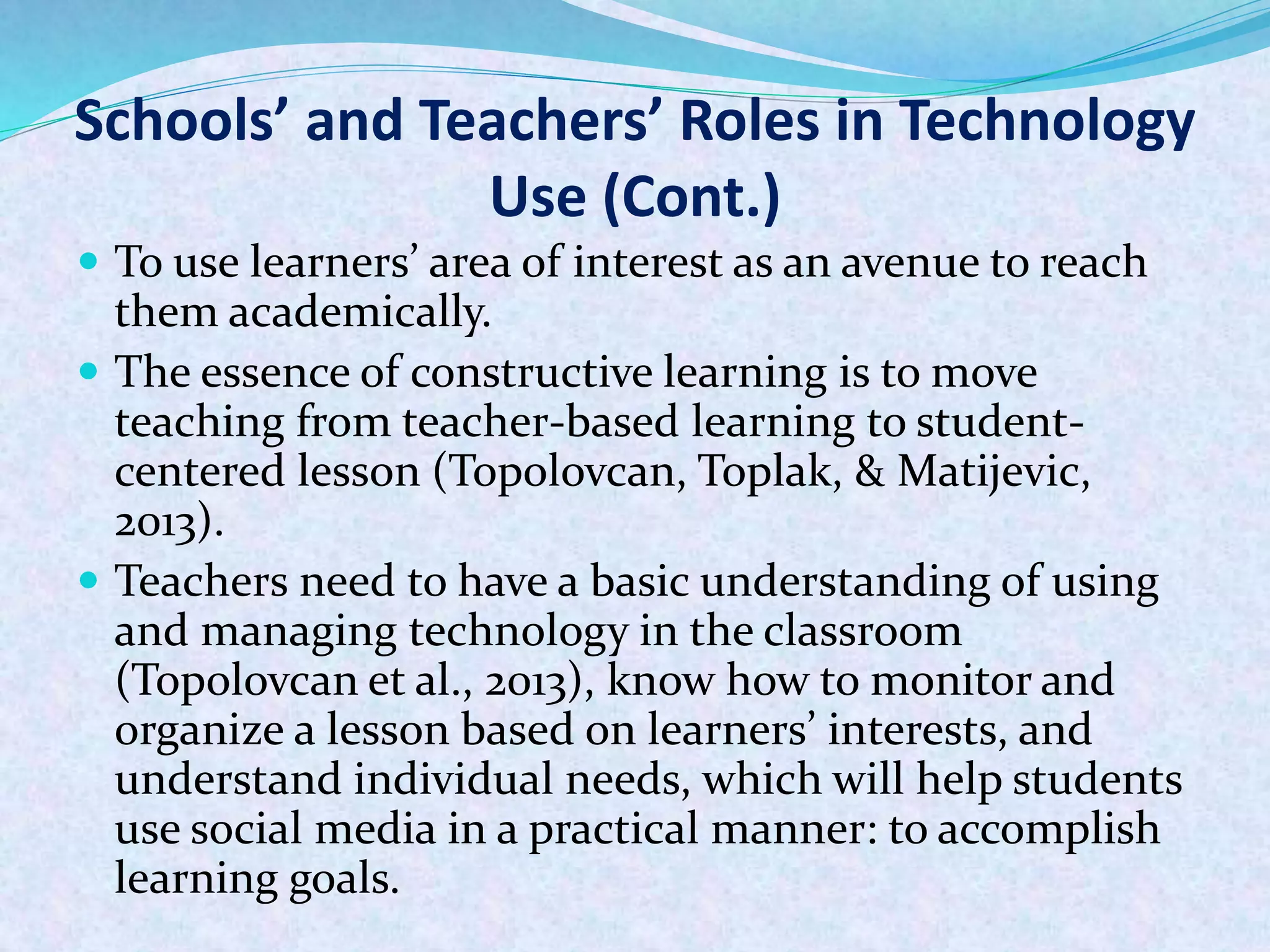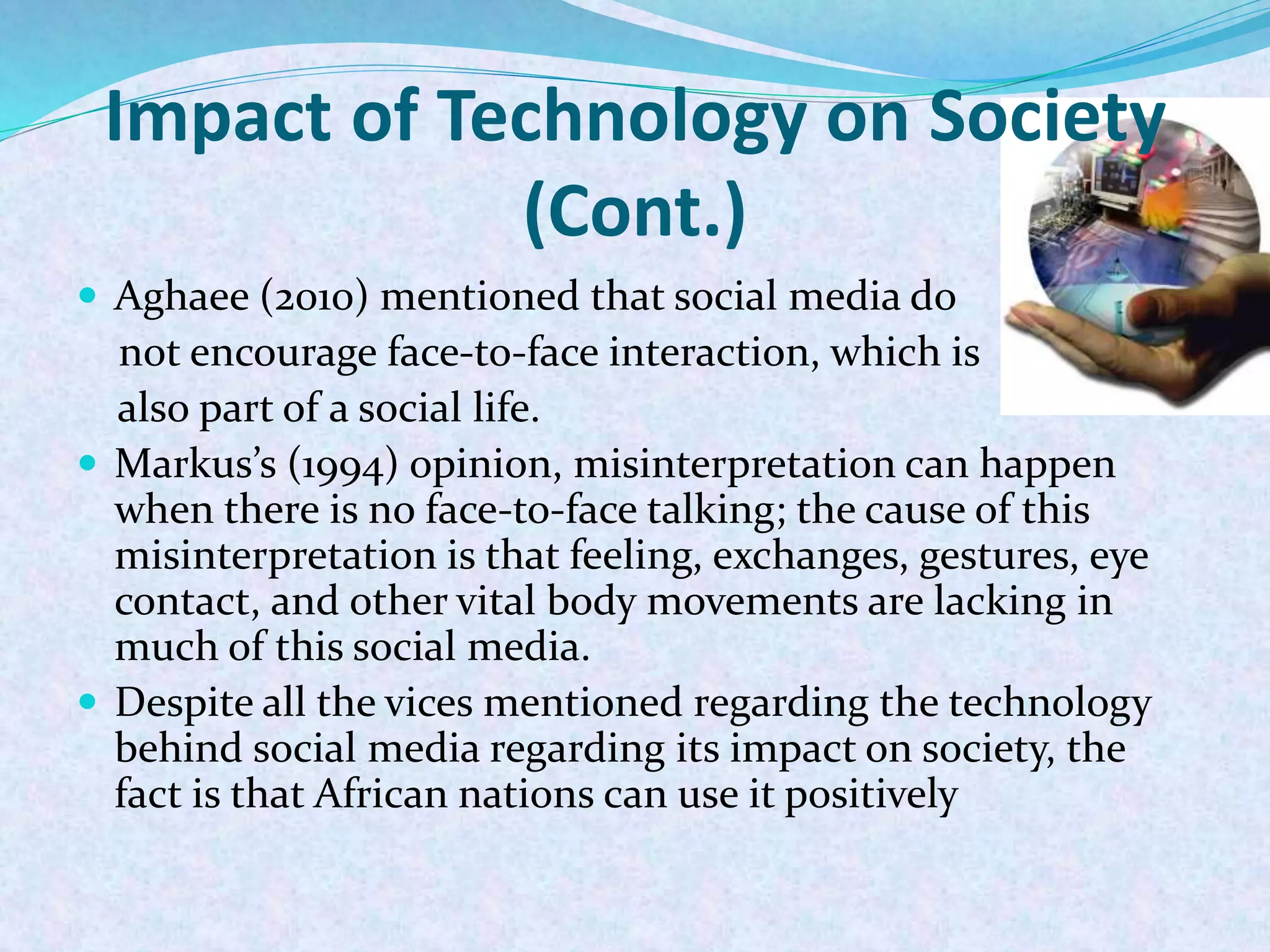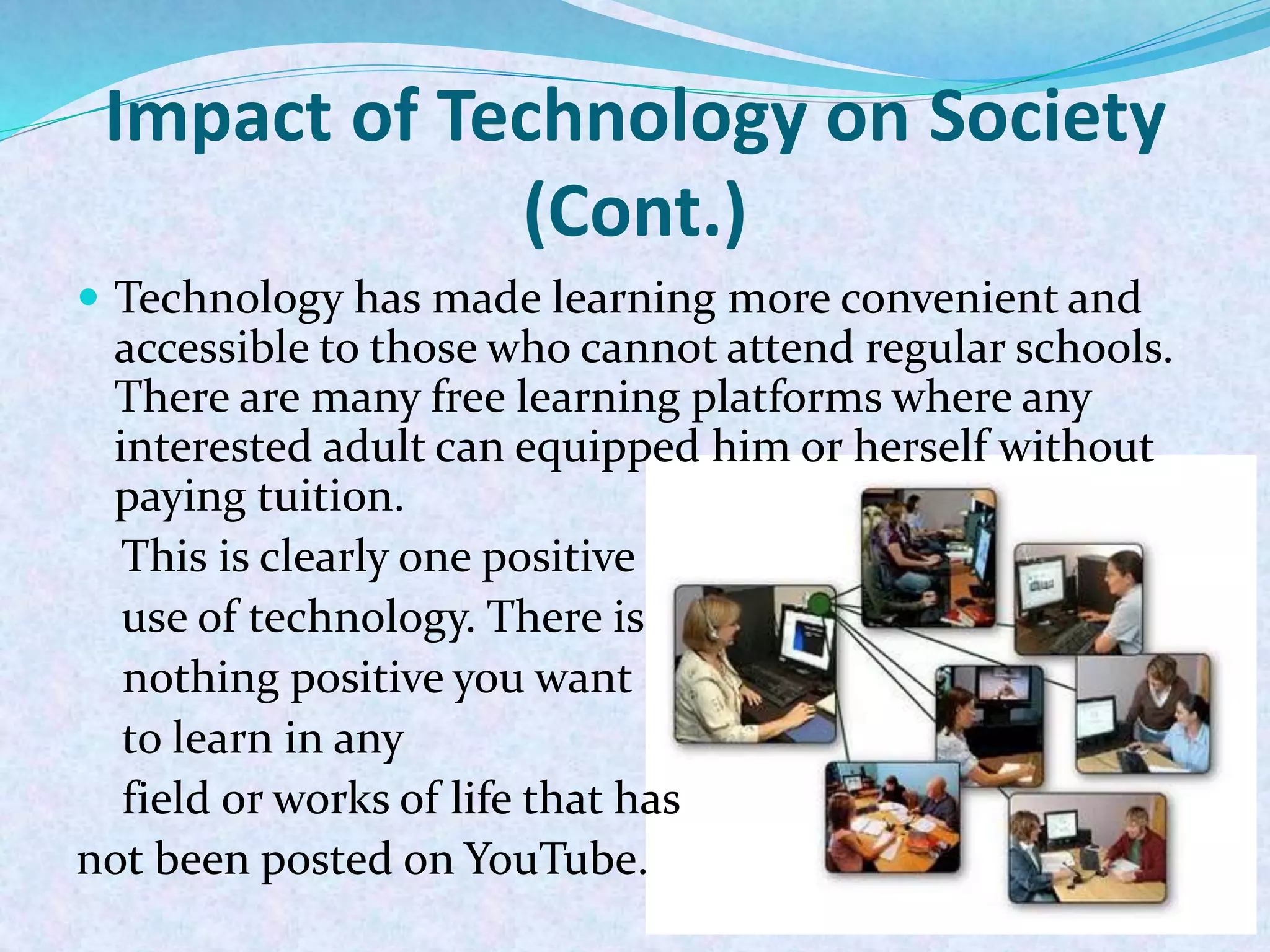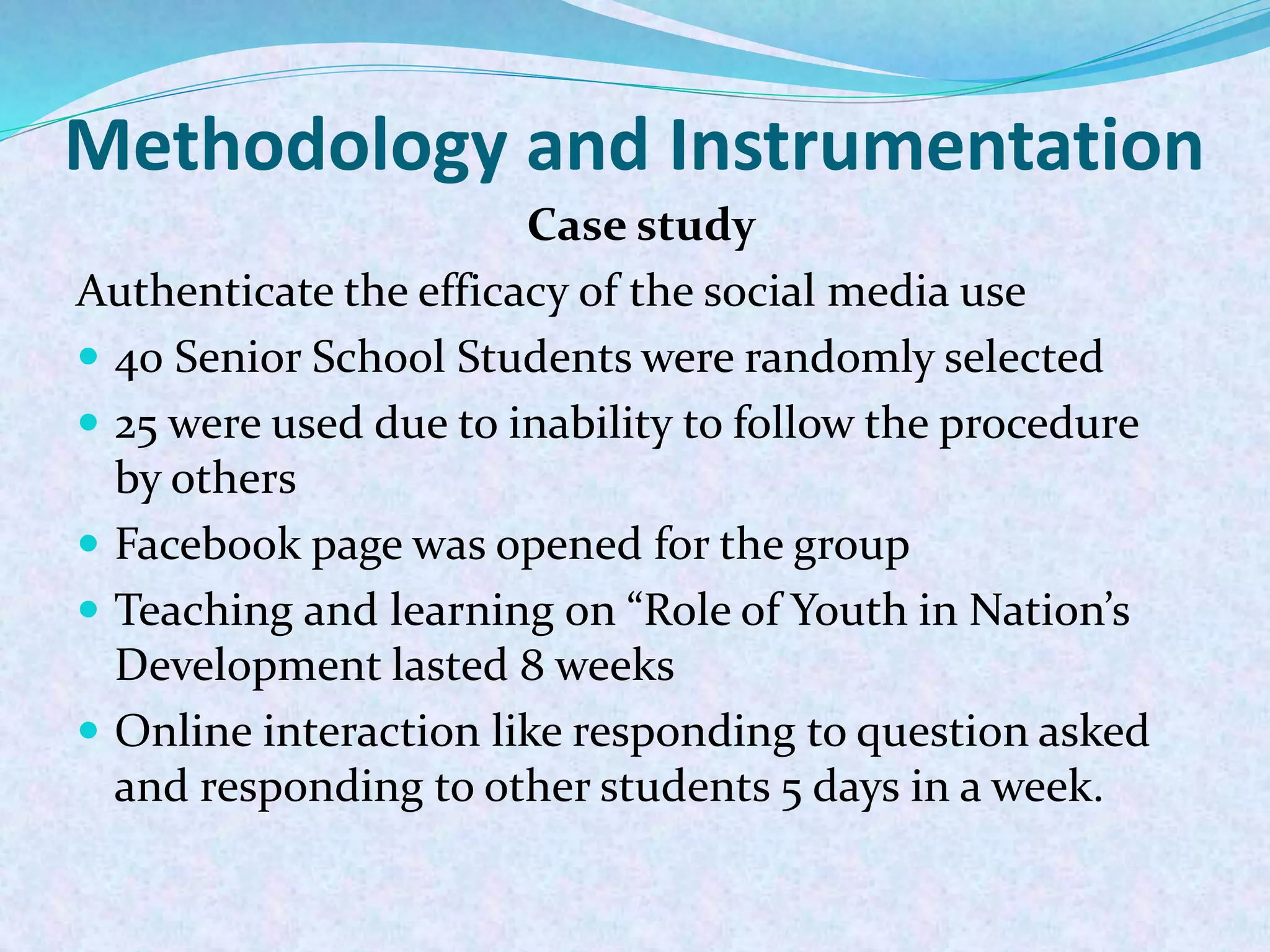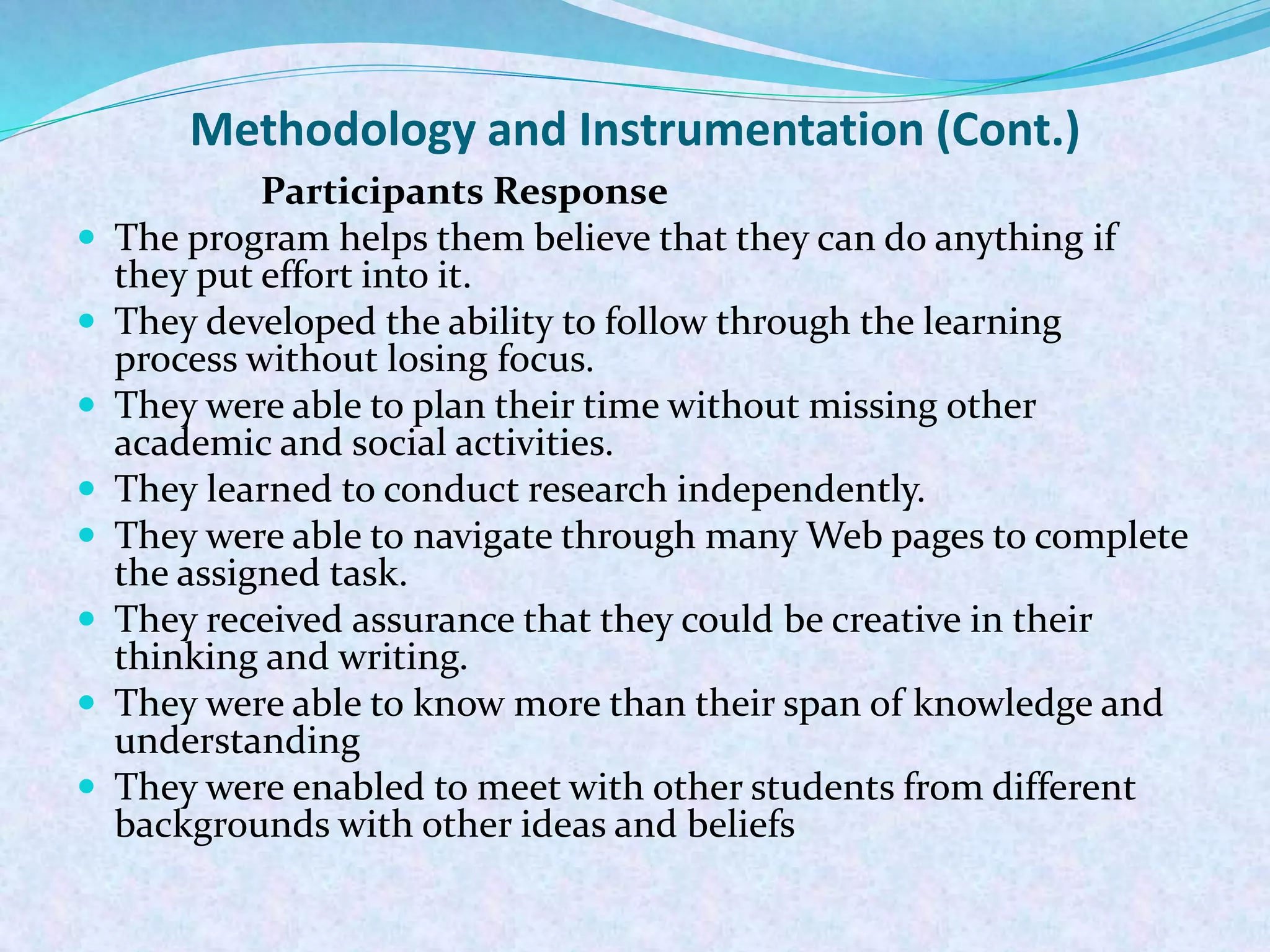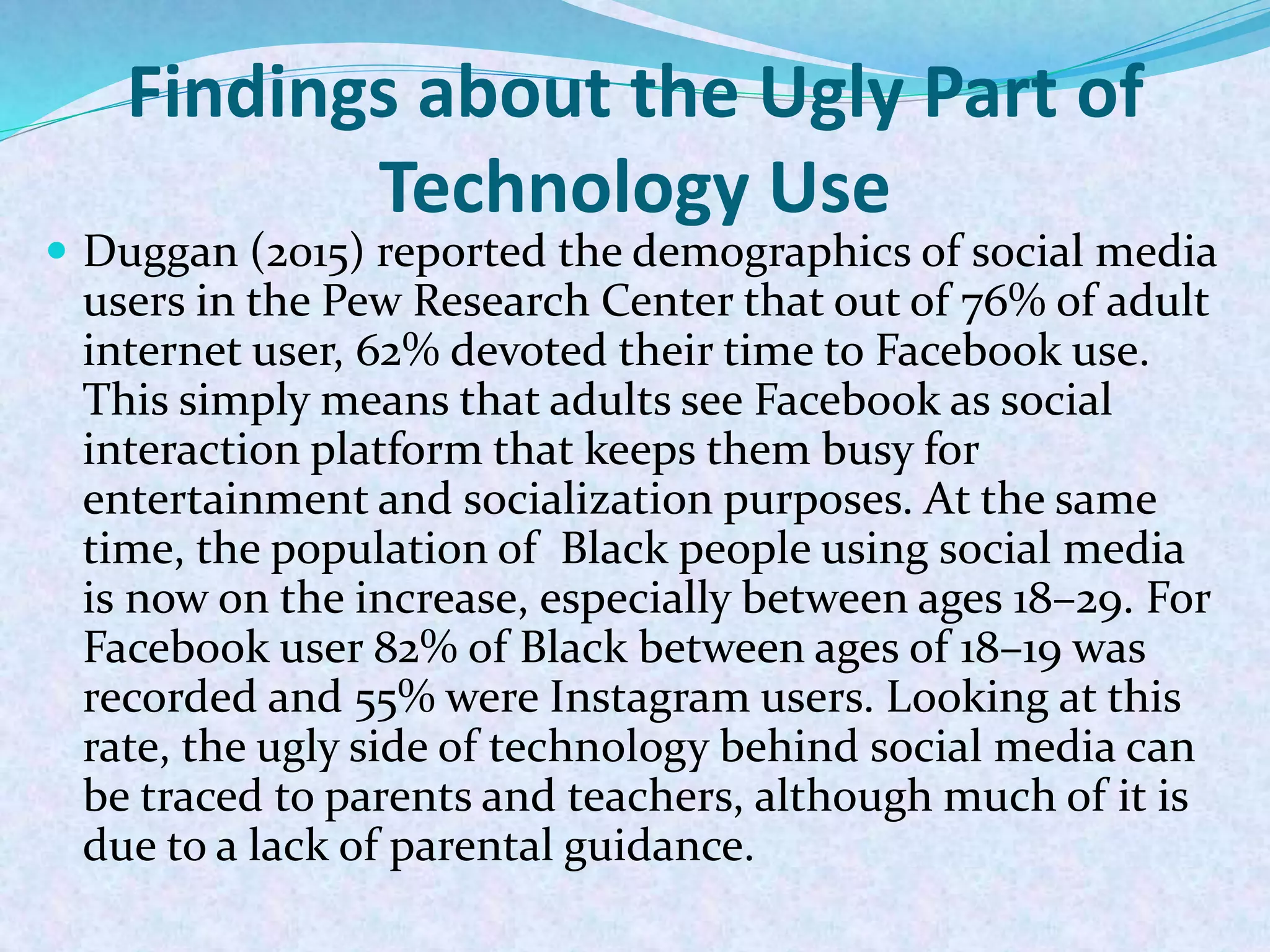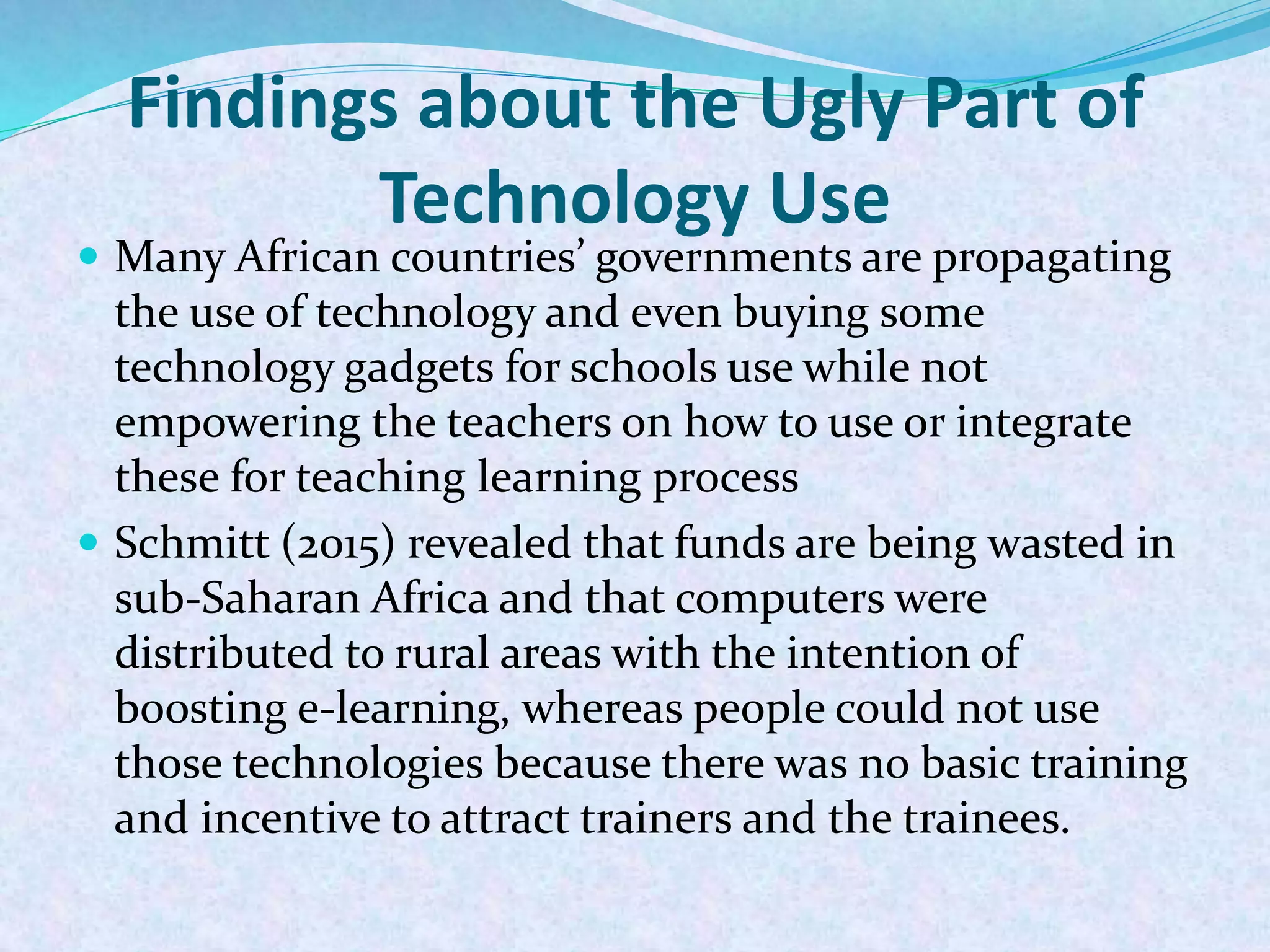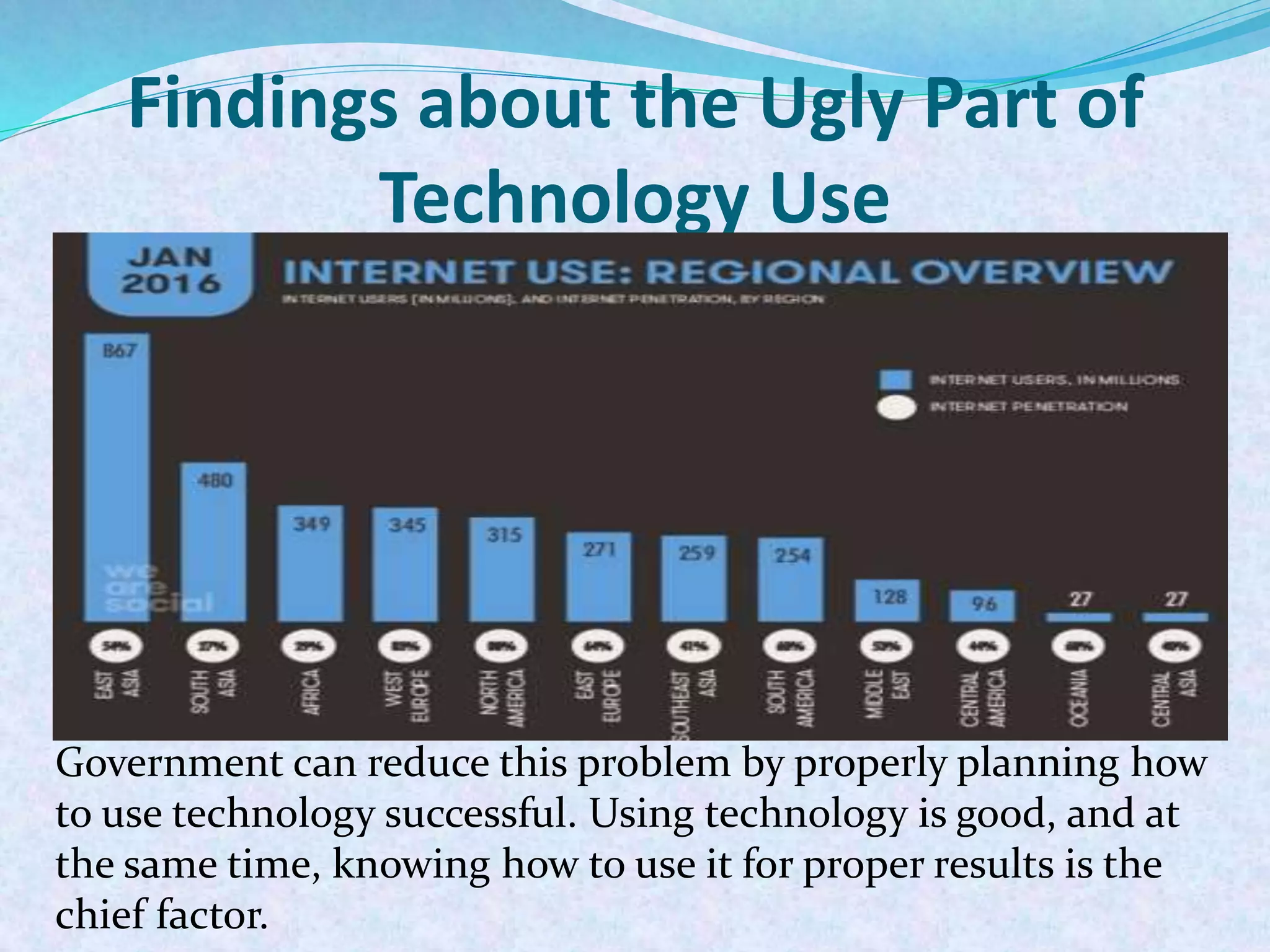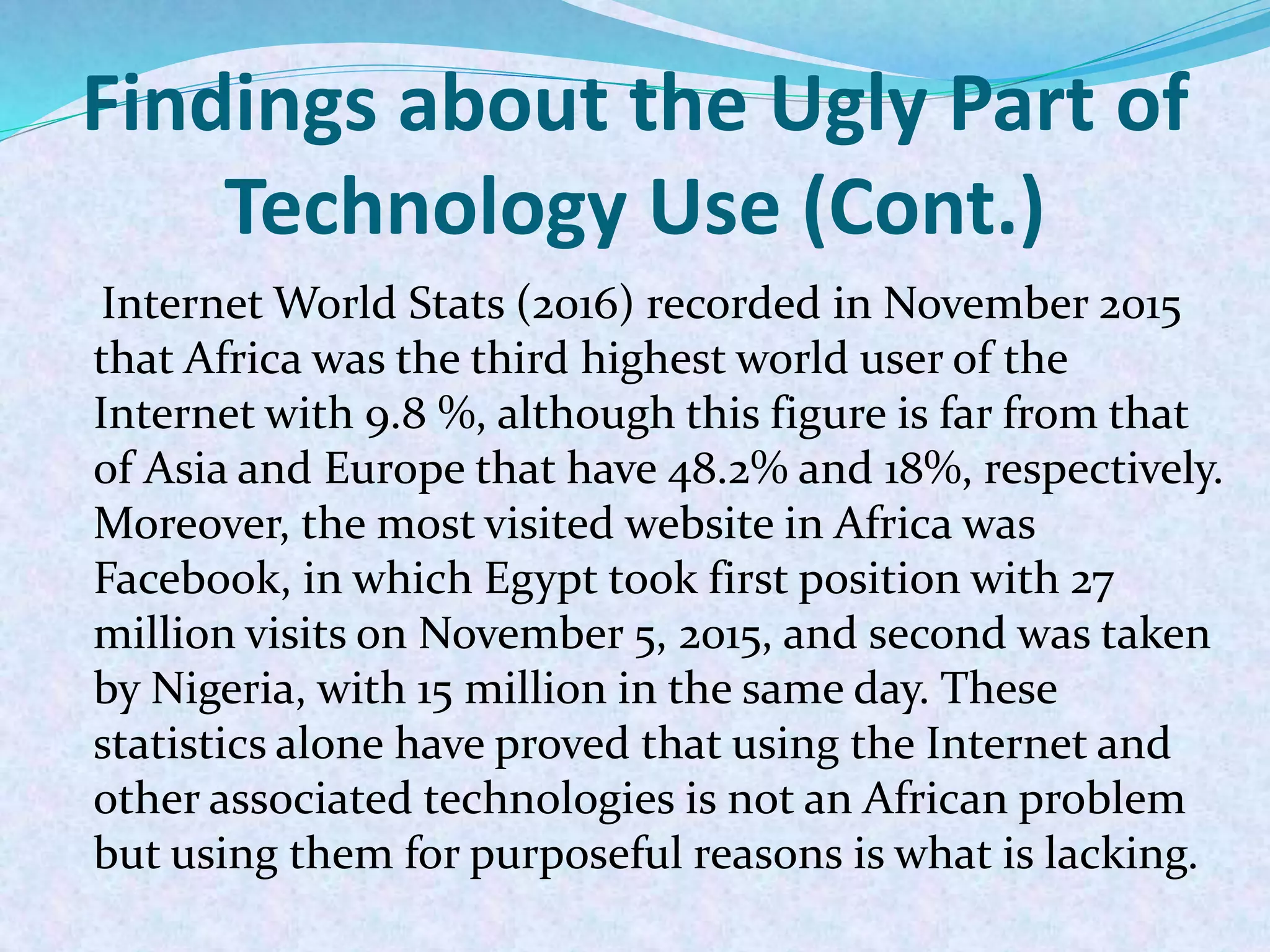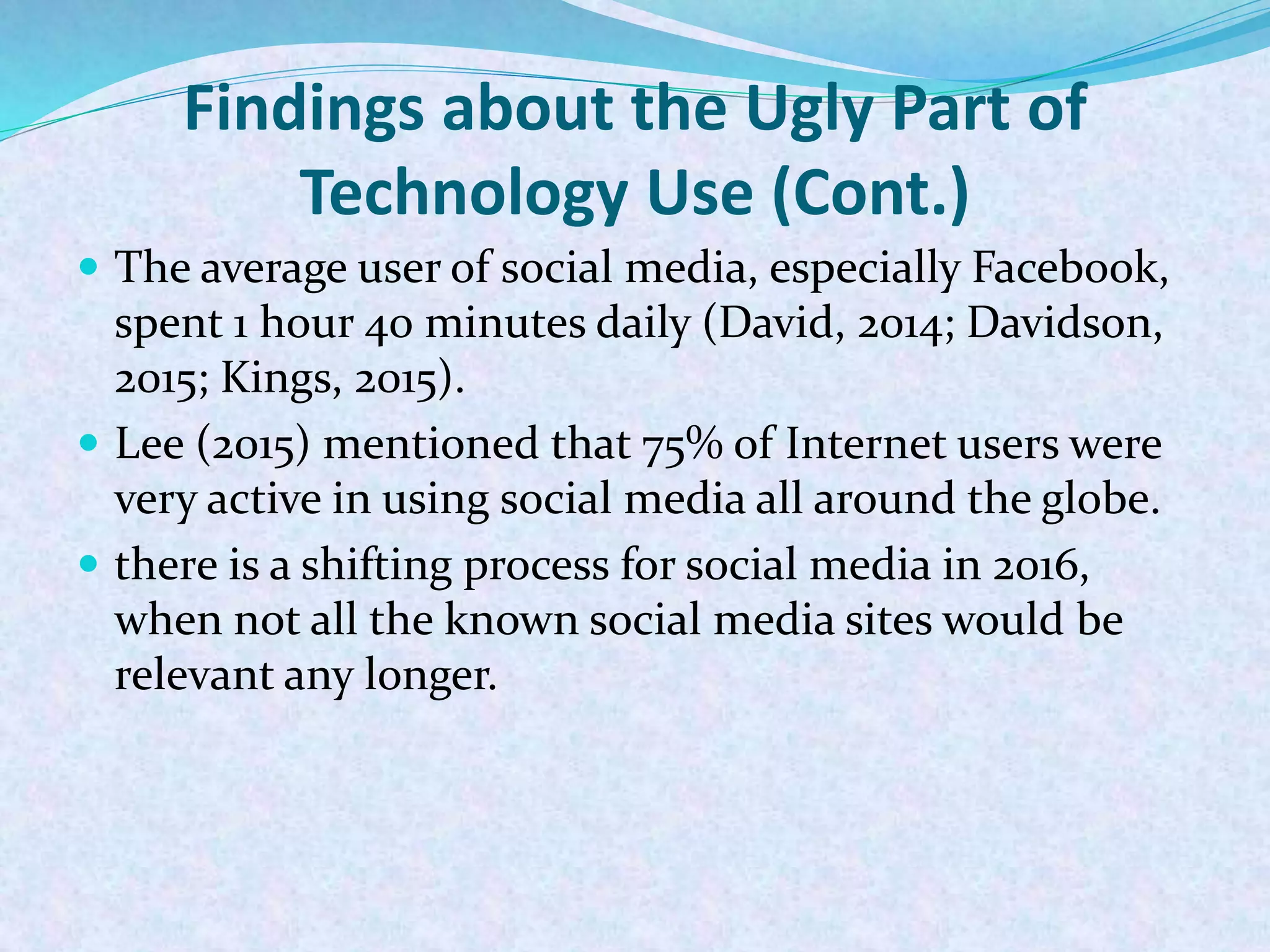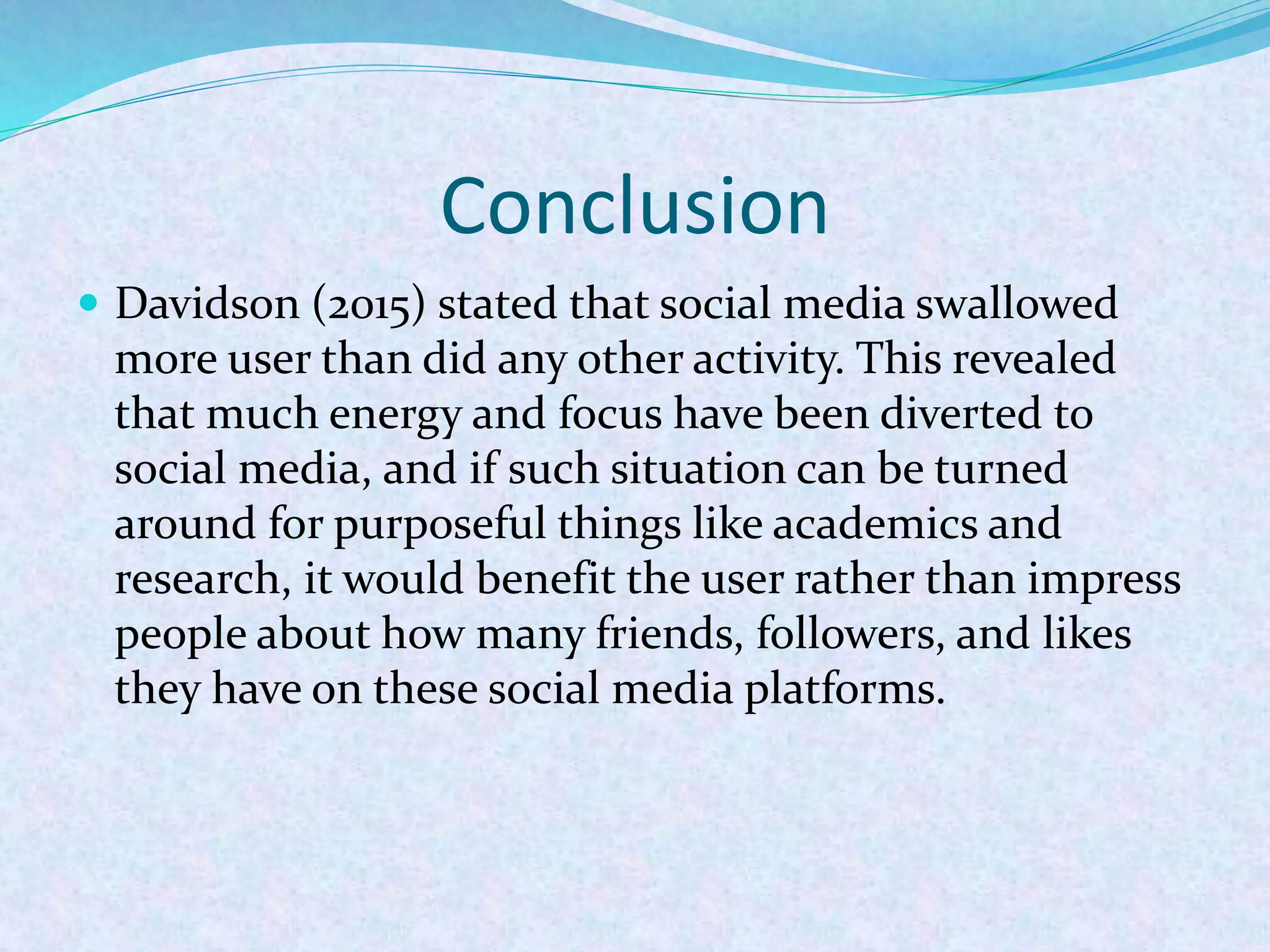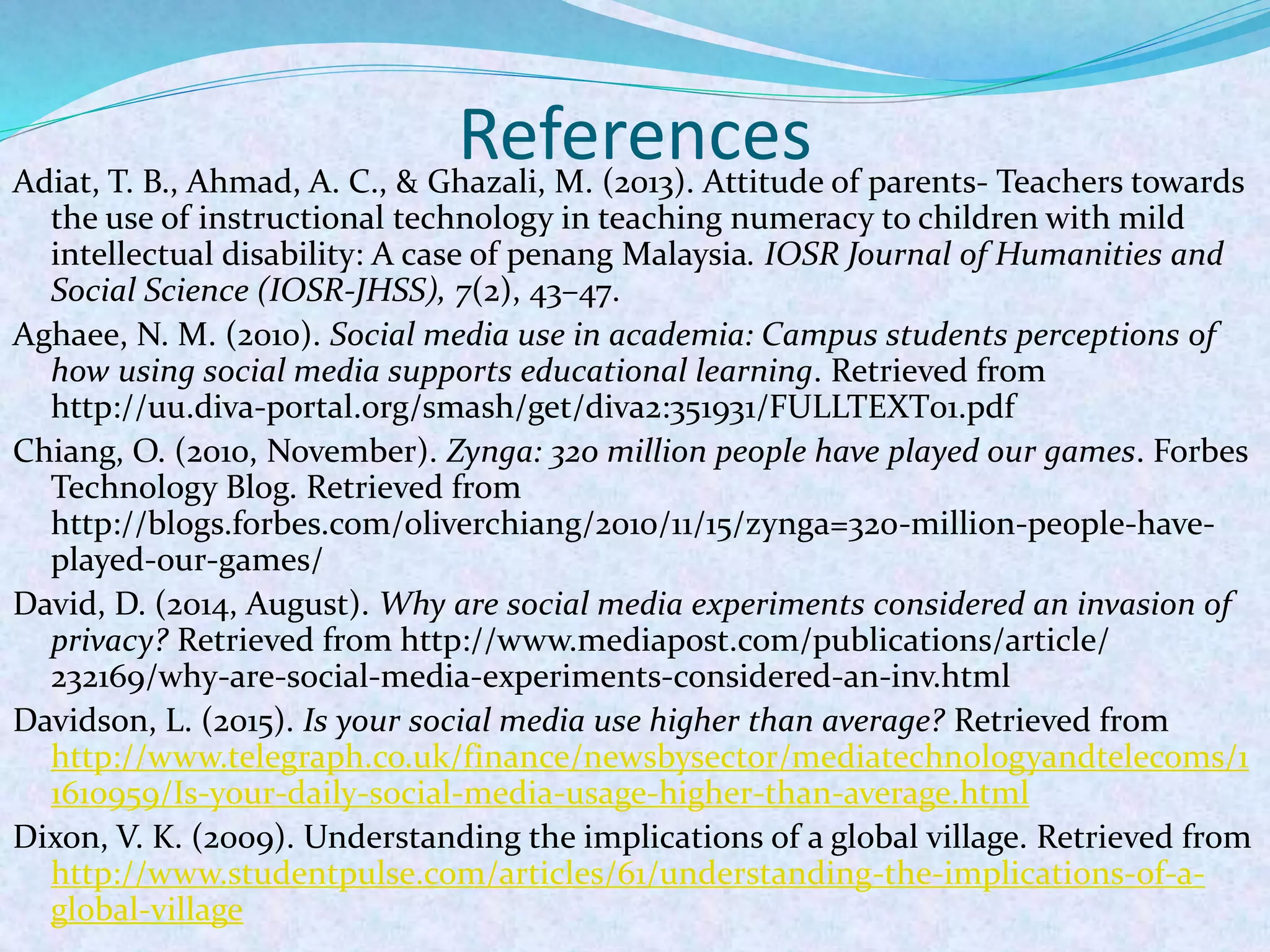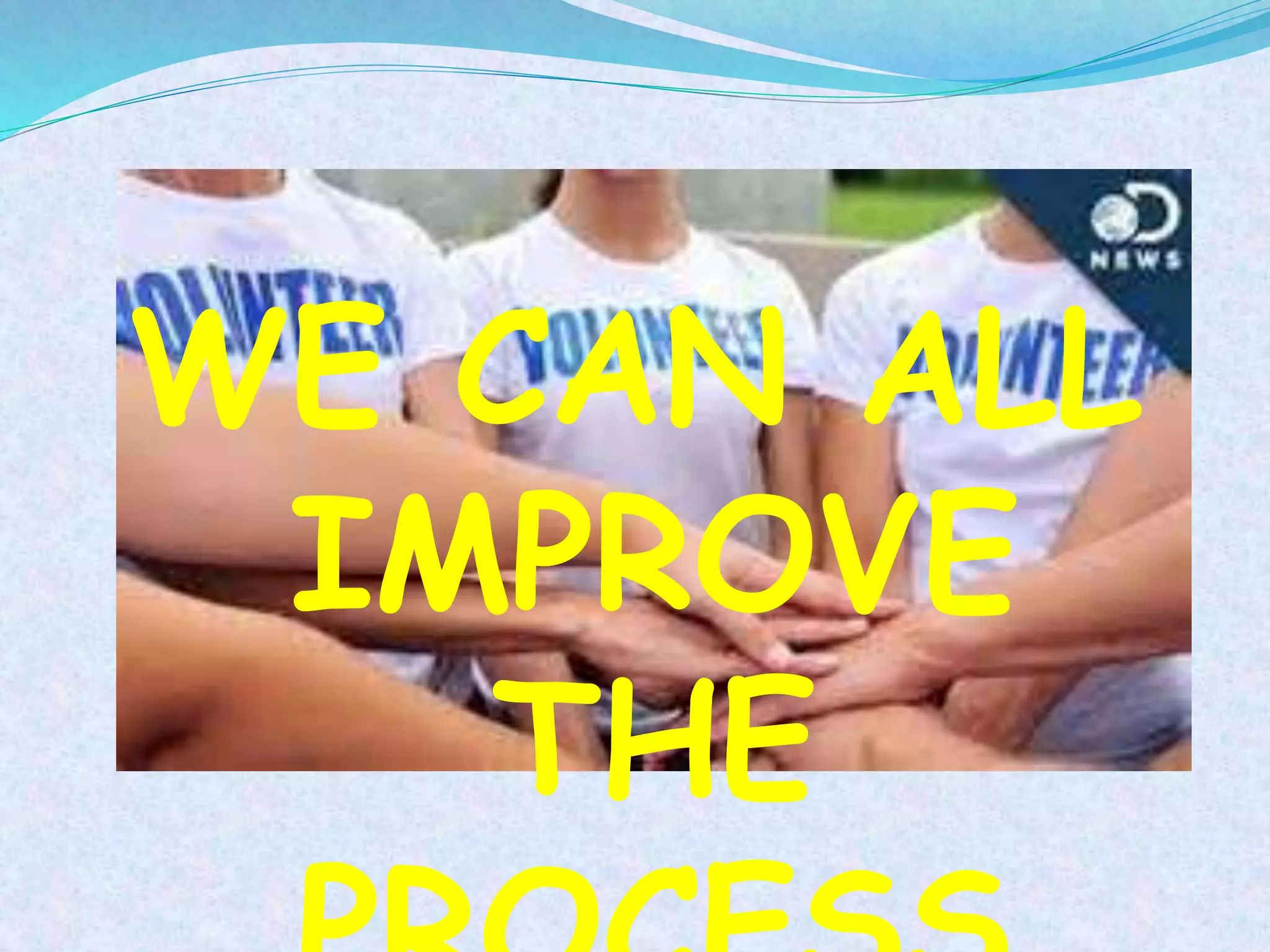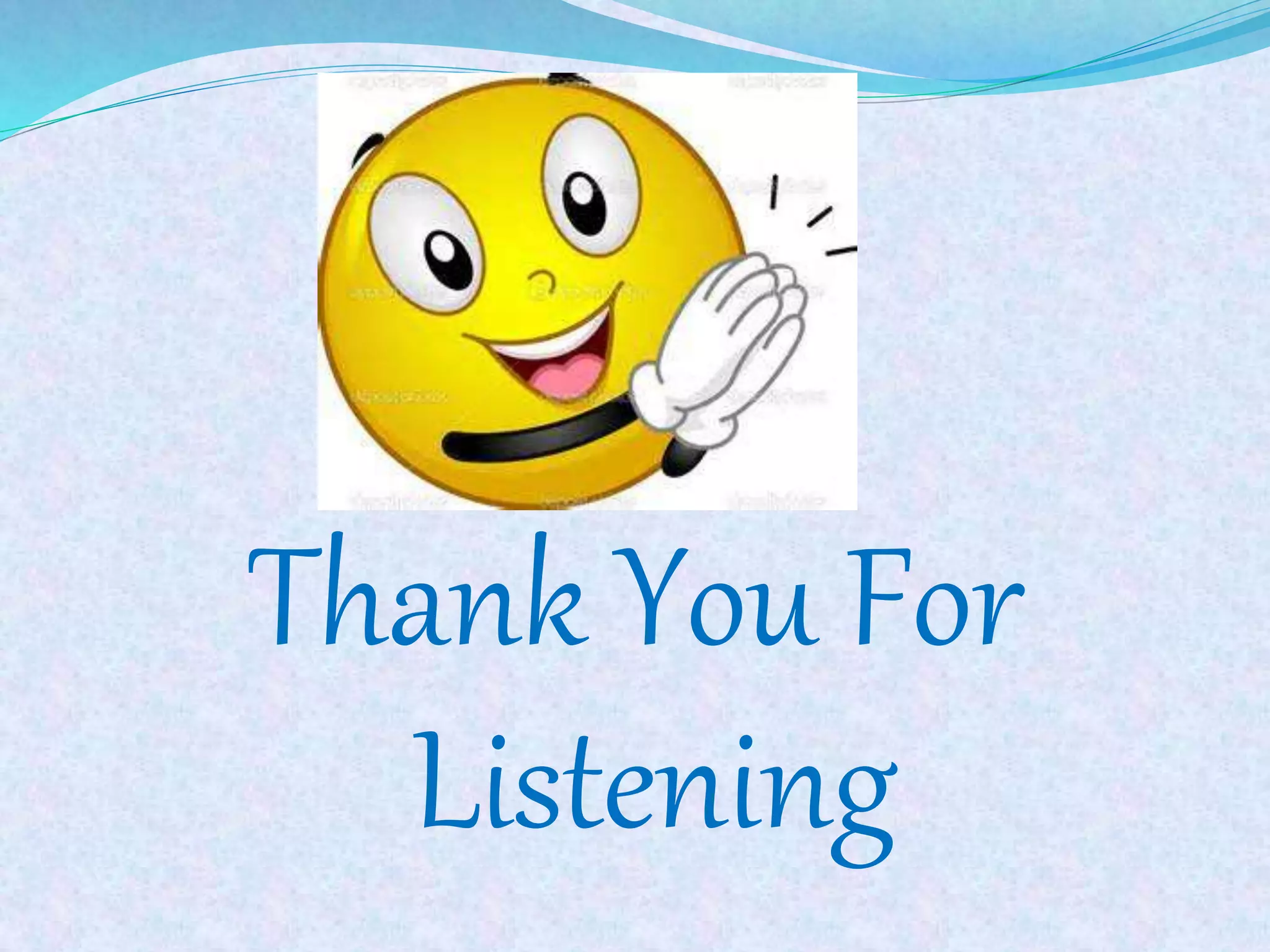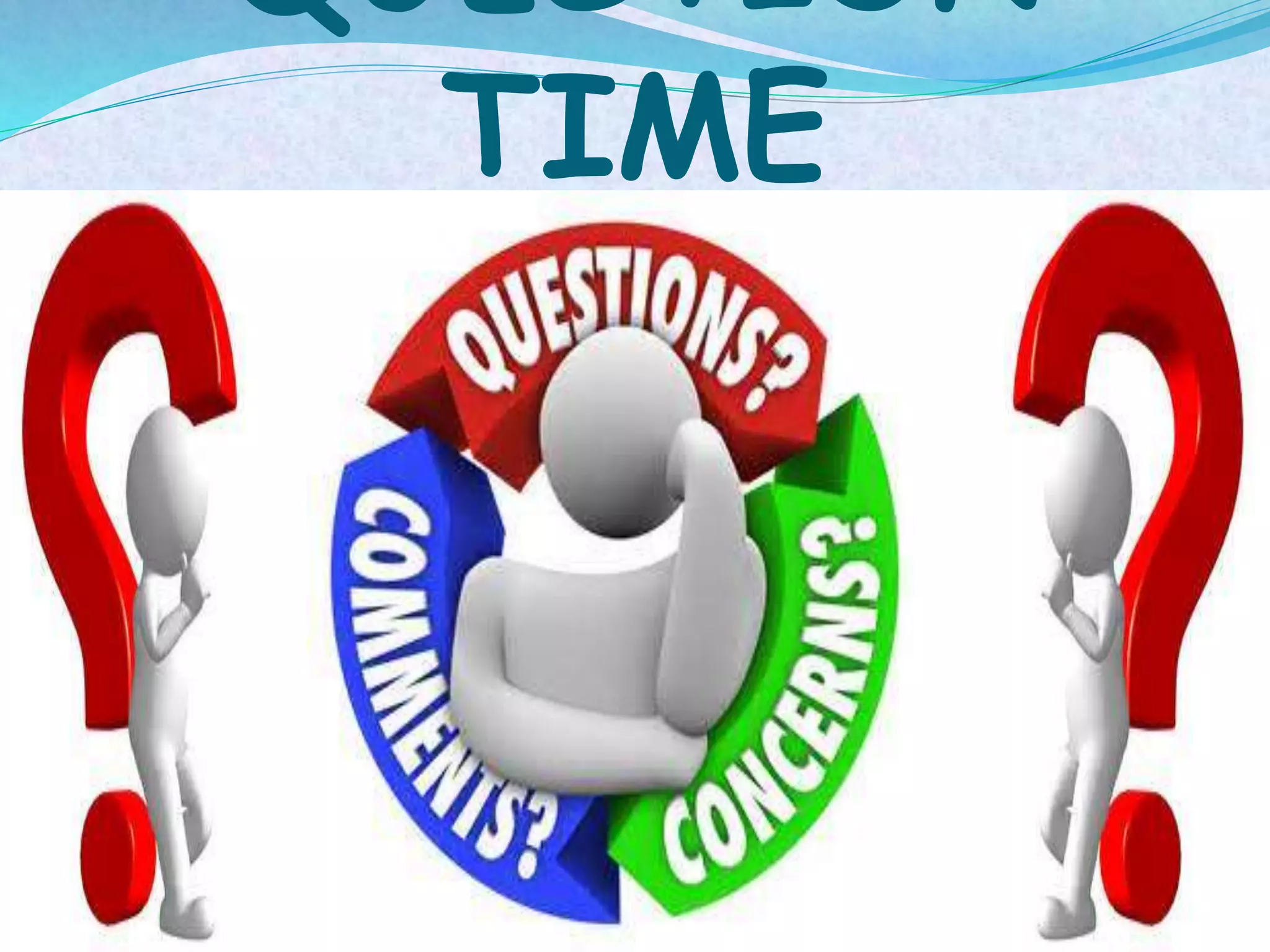This document discusses the impact of technology on education and society based on a study conducted in Africa. It begins by introducing how technology is being used in schools through BYOD programs but that human interaction cannot be replaced. The purpose of the study is to understand the effects of technology on education and society.
The study found that when used productively under teacher supervision, technology can foster creativity and engagement. However, perceptions of technology in Africa have been mixed and implementation challenges remain. The study observed students using social media for learning and found benefits like collaboration but some lost focus. Overall, when guided properly technology can benefit learning but also presents risks if misused that governments and educators must address.
